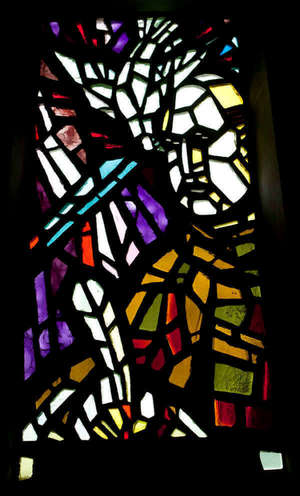Our Logo

In Christian iconography, the dove usually represents the Holy Spirit of God, which hovered over the waters of chaos at the moment of creation (Genesis 1.2), inspired the prophets (Ezekiel 11:5), overshadowed the Virgin Mary at the Annunciation (Luke 1:35), and descended in the bodily form of a dove when Jesus was baptized by John (Luke 3:22). The same Holy Spirit is active in the baptismal rebirth of every Christian (John 3:5-8), and will be “poured out on all people in the last days” (Joel 2:28; Acts 2:17).
Thus the dove reminds us of the unpredictable creative power of divine life, which cannot be captured or tamed. It is as life-sustaining as our very breath (Job 33:4), but also as unpredictable as the wind, which “blows where it wills, and you can hear the sound it makes, but you do not know where it comes from or where it goes” (John 3:8). In fact, in the Biblical languages, the concepts “spirit,” “breath,” and “wind” can all be rendered by the same word.

The unrestrained, unpredictable quality of creativity is also reflected in the grammatical gender of this word, which is masculine in Latin (spiritus), neuter in Greek (pneuma), sometimes masculine and sometimes feminine in Hebrew and Aramaic (ruach, rucha). The fourth-century Nicene Creed calls the Holy Spirit "the maker of life" (zôopoion, vivificantem).
Following the great flood, a dove brought to Noah a green olive branch, showing that life on earth was possible again (Genesis 8:11); the Church Fathers, therefore, understood this dove as symbolizing the Holy Spirit. In Catholic theology, following St. Augustine’s understanding of the Trinity, the Holy Spirit is often identified as vinculum amoris: the bond of love between the Father and the Son. “Love is inventive to infinity,” St. Vincent de Paul wrote in his “Exhortation to a Dying Brother" (1645).
From early times, images of Pope St. Gregory the Great (reigned 590-604) included a dove whispering in his ear. This originally signified the spiritual depth of Gregory’s preaching, but it was soon adapted to symbolize the belief that Gregory was inspired by the Holy Spirit to compile Gregorian chant, the earliest surviving of sacred music in the Christian West. More recently, the dove has also appeared in imagery of St. Thomas Aquinas (1225-1274), representing the profound spiritual insight of his scholastic theology.
Our logo is derived from a stained-glass window in the chapel of Moreau Seminary at the University of Notre Dame. It shows St. Thomas Aquinas writing his magisterial Summa Theologica with a quill pen, guided by the Holy Spirit in the form of a dove. The window was designed by Anthony J. Lauck, C.S.C., who graduated from Notre Dame in 1942 and died in 2001. Thus the multi-faceted dove symbol suggests many things we want our program to represent: the traditions of sacred music, deep and prophetic spirituality, the perennial newness of life-giving love, the heights of academic theology, and the inspired unpredictability of artistic creativity.